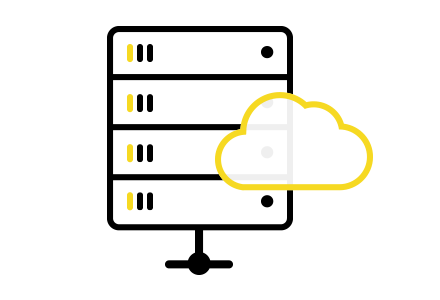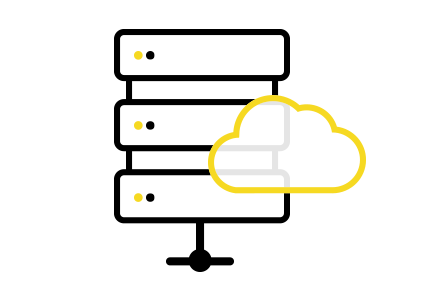In conclusion, if a flaw occurs in your IT system, how can you safeguard all the sensitive data of your customers, the work of your employees and, consequently, thousands and thousands of Euros?
For this reason, it is necessary to have a Disaster Recovery plan in action.
| DISASTER RECOVERY SOLUTIONS | DR LEVEL | |
|---|---|---|
| CLOUD BACKUP | Off-site backup with RTO / RPO, starting from 24h | Level 1 Disaster Recovery |
| CLOUD DATA PROTECTION | Off-site backup with priority restore of VMs and RTO / RPO, starting from 12h | Level 2 Disaster Recovery |
| CUSTOM PROJECT OF ON PREMISE SYSTEMS REPLICATION ON THE CLOUD | Cloud replication of the corporate infrastructure on premise with customizable RTO/RPO | Level 3 Disaster Recovery |
| CLOUD PROJECT WITH DR IN CLOUD | Seeweb Public Cloud infrastructure replicated on Seeweb Cloud | Level 4 Disaster Recovery |
Disaster Recovery Plan: What is it?
It is the planning of the measures and processes necessary to respond to cybersecurity issues and data loss cases.
It can happen when a human error or a voluntary threat to cloud systems puts your data in danger. We can list several data loss risk causes:
- simple human error;
- pfailure due to natural causes (earthquakes, fires, floods in the data center locations);
- cyber attacks, etc.
It is important that your Cloud Computing plan includes the actions and strategies necessary for Disaster Recovery.
What are these strategies? To understand this, you need to know that a completely secure IT architecture is not possible.
Some of the accidents mentioned above cannot be avoided. However, this does not mean not paying attention to your data, files and documents.
In fact, the Disaster Recovery plan must be organized together with the service Provider.
A good plan takes into consideration what are the fundamental data for one's work activity, the RTOs and RPOs you need to establish, what tools you need to use for your data recovery. In Seeweb, we implement Cloud Disaster Recovery best practices based on innovative systems and the most advanced tools to ensure our customers a fast and complete recovery of their data
Disaster Recovery Solutions
Now, let’s consider the worst thing that can happen to a hosting provider and its customers: a data loss issue.
Solutions like Cloud backup and the right Disaster Recovery strategy ensure that data are recovered as quickly and fully as possible.
Planning a disaster recovery strategy is essential, and this requires you to consider two parameters during planning:
- RTO (Recovery Time Objective), that is the duration of time that, following the company needs, can elapse between the shutdown of a system and the recovery of its operation.
- RPO (Recovery Point Objective), defined as the maximum volume of data - that is measured by time - that the company decides that can be lost after a recovery from a disaster.
Both values allow the Cloud Provider to support you in defining a Disaster Recovery plan, suited to the needs of your company, the personal data you process and the threats you may be exposed to.
Disaster Recovery: multiple levels for various needs
A Disaster Recovery Plan (DRP) allows you to safeguard your data by recovering them when an issue or action makes them unavailable. Depending on your project data criticalities, multiple levels of Data Protection exist that can secure your work and information.
A “minimal” strategy is to start from a Backup which, performed in a Data Center far enough away from the place where the running data are located, guarantees the right security, as in the case of Cloud Backup.
In addition to being
Together with a backup strategy, more sophisticated data replication strategies exist that can make your IT environment even more secure. They consist of projects such as the cloud data replication of your on-premise architecture or your public cloud Disaster Recovery plan, implying a precise definition of RTO and RPO.
These are always strategies that require adequate planning, which can be done with the support of our Cloud specialists.



